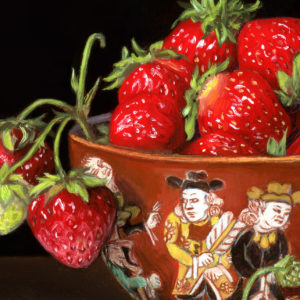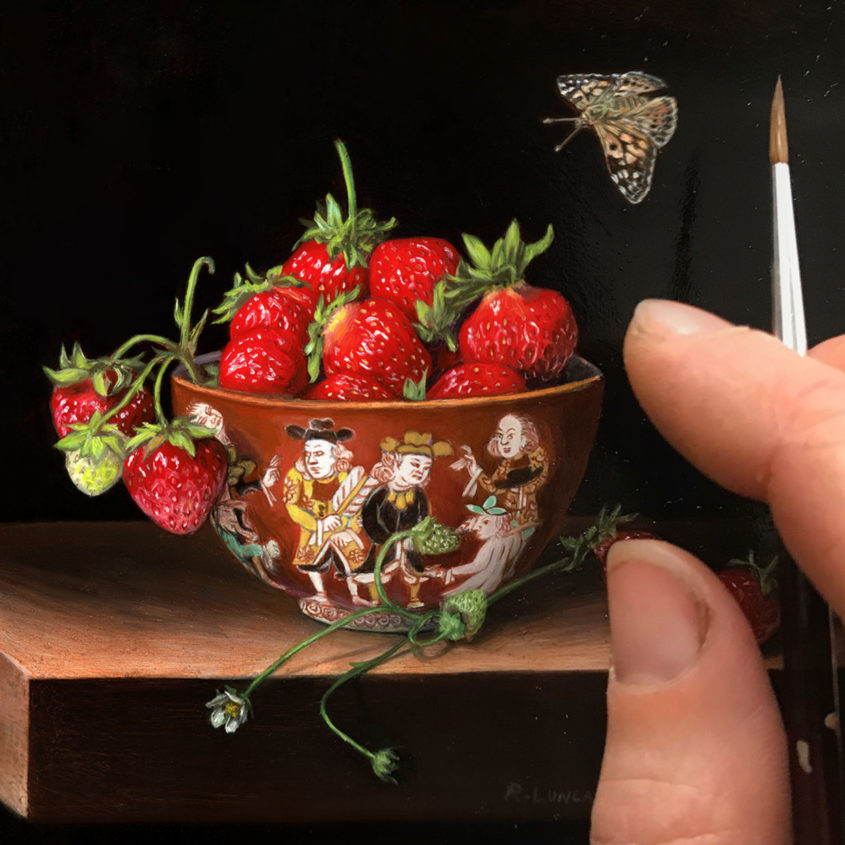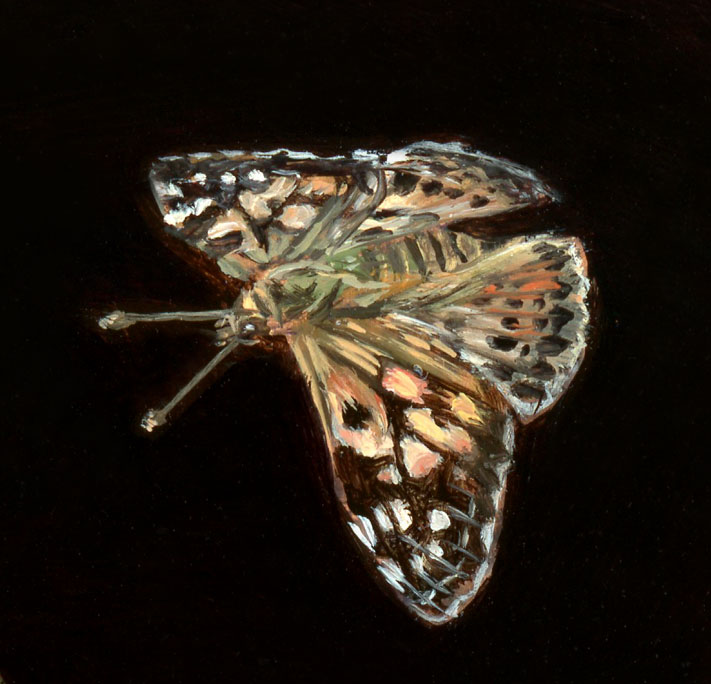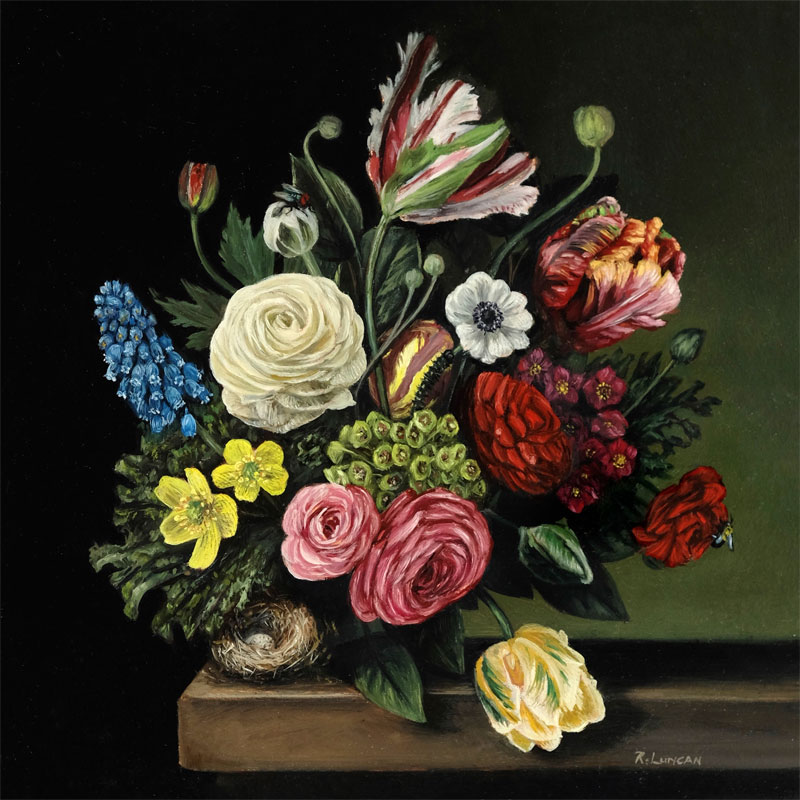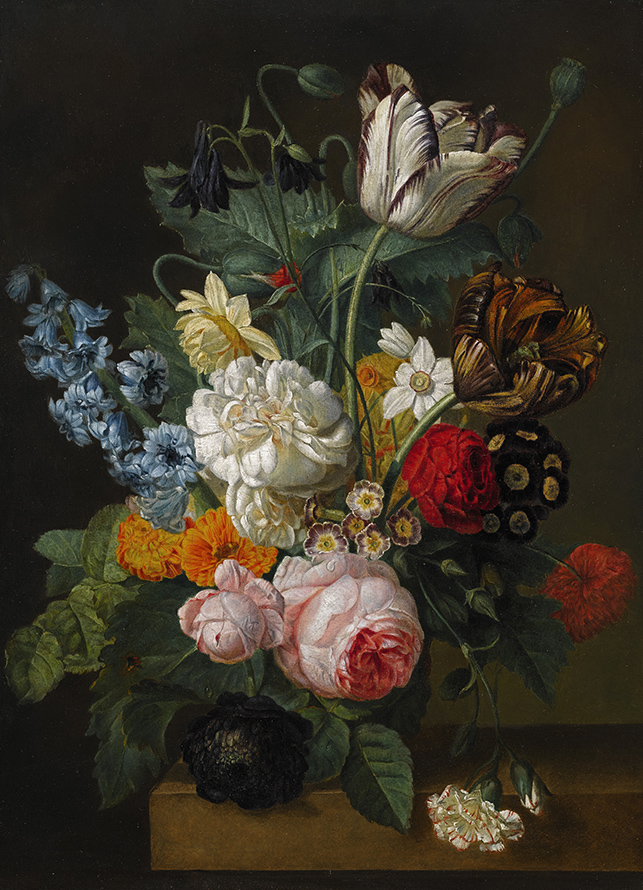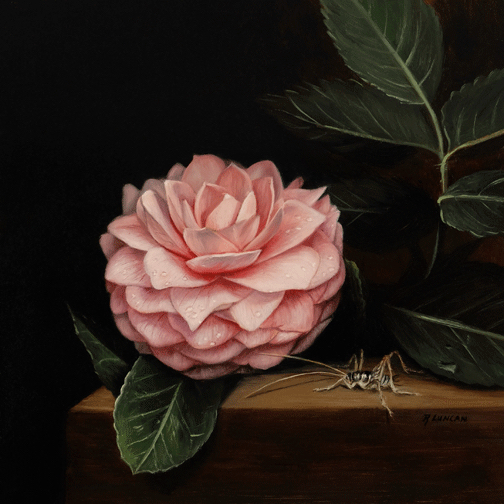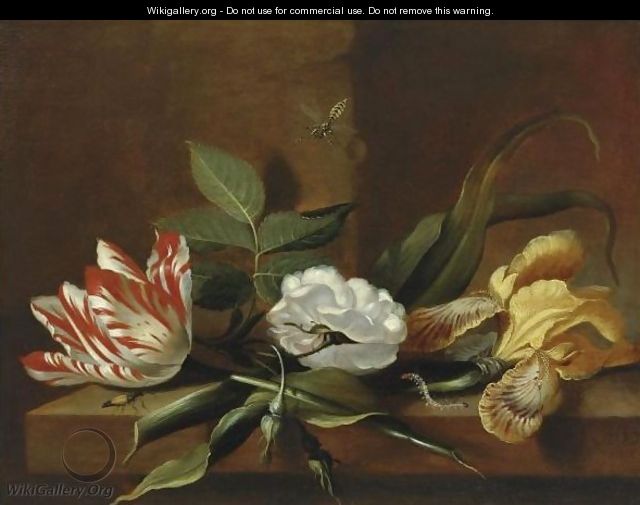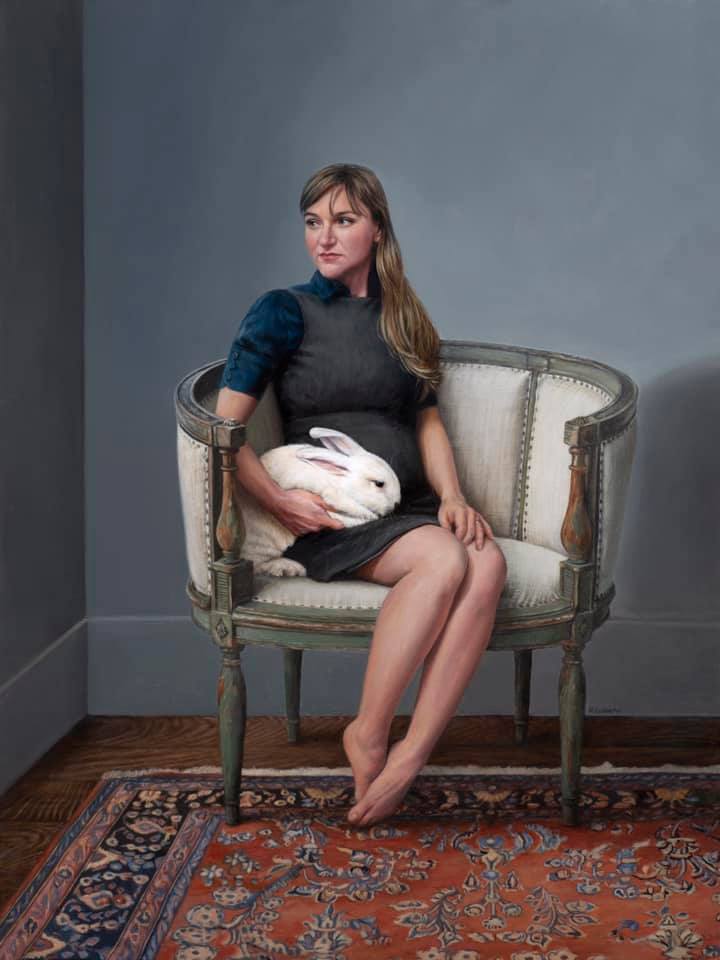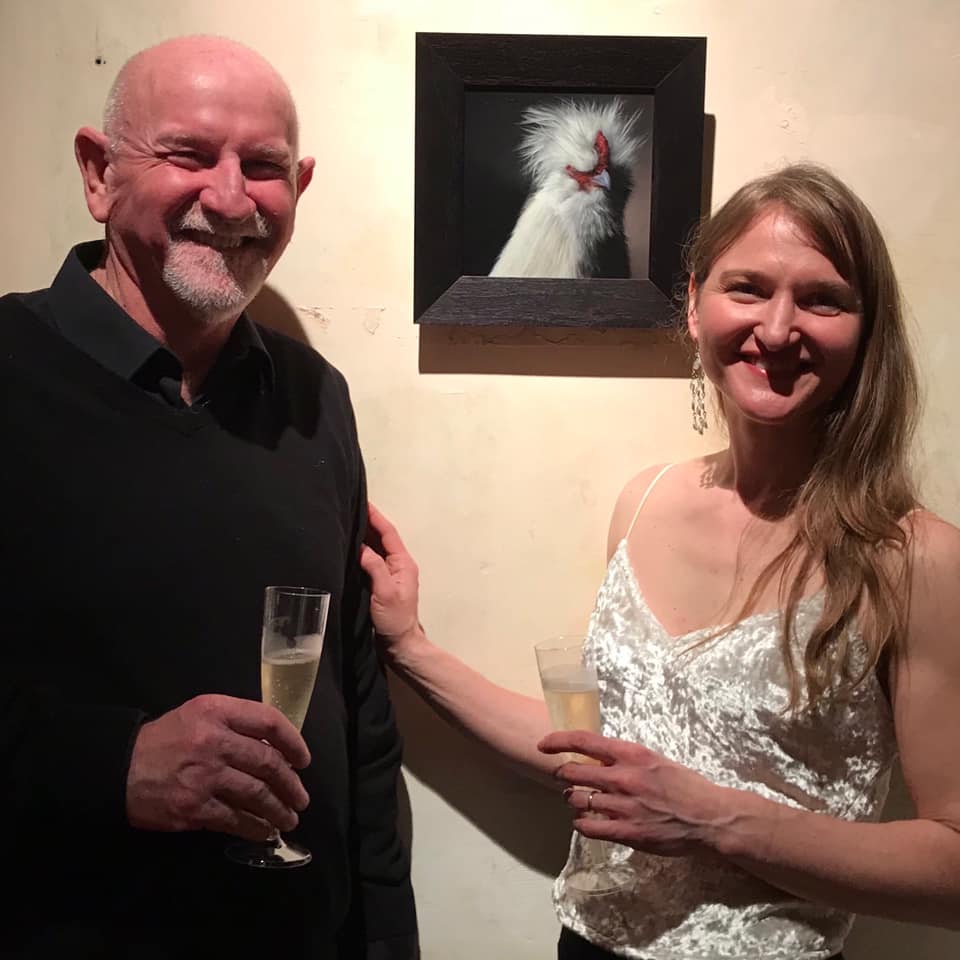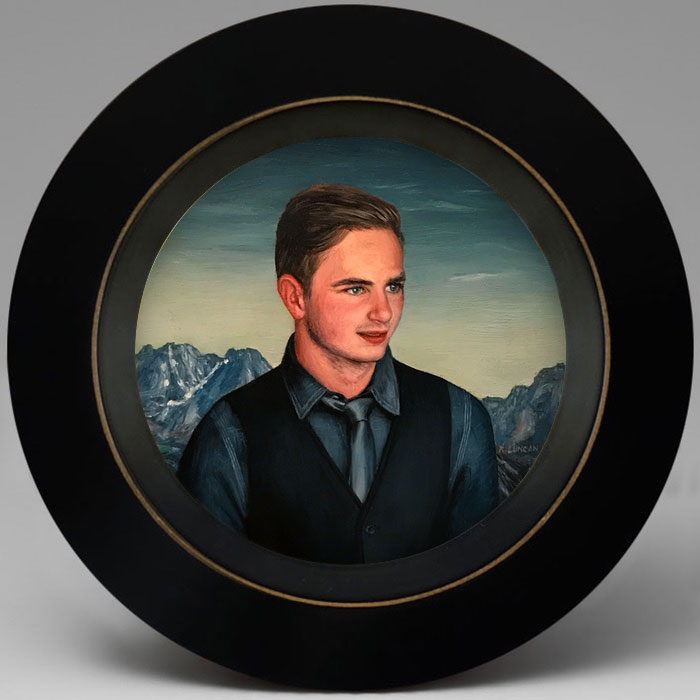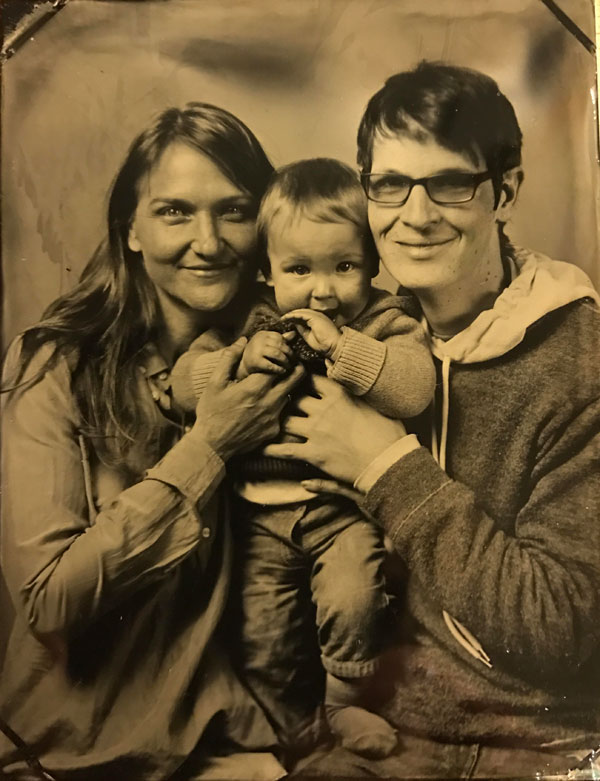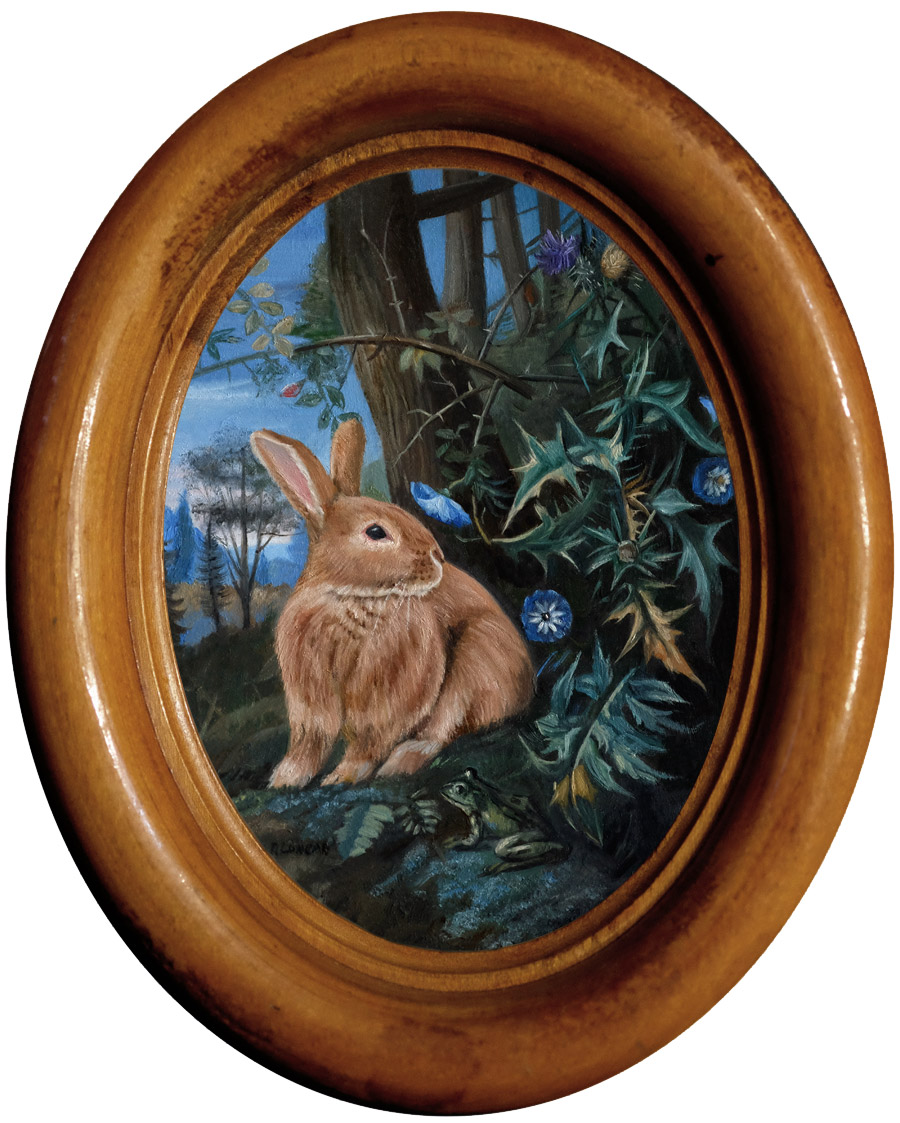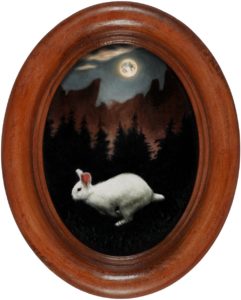Conor is the son of two artists. I’ve known his father, sculptor Tom Gormally for years. And although we only recently met, I have known of his mother as one of Seattle’s most talented portrait artists.
From the first look, I saw Conor as having a classic look. I immediately thought of one of my favorite portrait painters, Gerald Leslie Brockhurst. Brockhurst was born in the late 1800’s and painted portraits of the English gentry and Hollywood stars in the 1930’s. So I dressed Conor up a bit and added a backdrop of Mount Rainier, painted in Brockhurt’s muted style.
As Malayka and Tom write about Conor, it feels like looking into my future; and when Malayka describes her conversation with Faye Jones, I remember having the same conversation with my dear friend Andi. More and more I feel bonds of common experience, even with people I have yet to meet, like Faye Jones.
Parenthood can strain lives and challenge friendships, not to mention art making, but it is wonderful how connections are built and strengthened too. So once again I want to thank everyone who has agreed to participate in this project! And without further ado, the Gormally family:
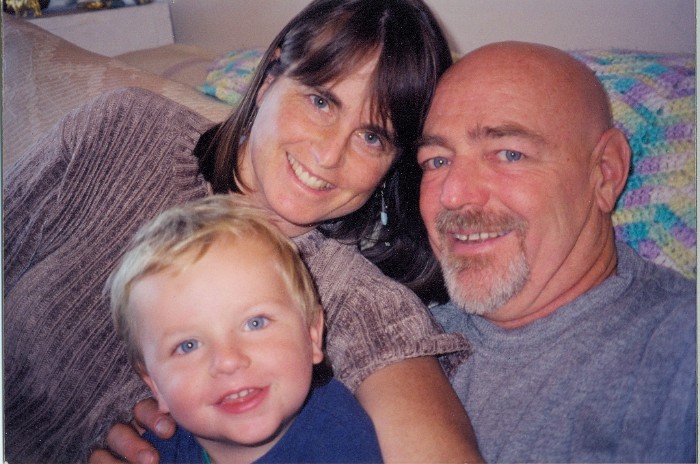
Malayka, Tom and Connor
From Makayla:
Our son Conor turned twenty today, and we enjoyed visiting with him at his college dorm via Facetime. When I first became pregnant, I didn’t know how I would handle being an artist and a mother. Now we have a wonderful grown son, and I’m also grateful for the ways in which being a parent has affected my art practice.
I remember being pregnant and walking on Alki beach on a cloudy day with artist Faye Jones, whom I had asked to talk with me about how she combined parenting and being an artist. She had raised four children while building a successful career, and explained to me that she had painted small works at home when her children were very young, and from then-on worked a full day, every day, at a studio down on First Avenue. I remember her saying, “I just did it.”
Before becoming pregnant, I painted abstract work. I was so fascinated with my body’s changes that I started painting myself in the mirror and then painted Conor as a baby. Over the next couple of years, I developed a commission portrait painting business which I’ve maintained to this day. In the last several years, as Conor has become more independent, I’ve been able to focus on my non-commission paintings and expand my career.
I’ve always painted at home which allowed me to be there for Conor in the afternoons, on sick days, and for school events – for which I’m grateful. It also means that Conor has been involved in every part of the art-making process. He regularly gave me feedback on portrait paintings in-progress. Conor is now my go-to business advisor as he has a good head for pricing, negotiation, etc. As a skilled writer, Conor has played a crucial role in that he serves as our editor and composition aid for every grant application, artist statement, and bio that his dad and I write. We consider Conor to be a crucial part of the family art business.
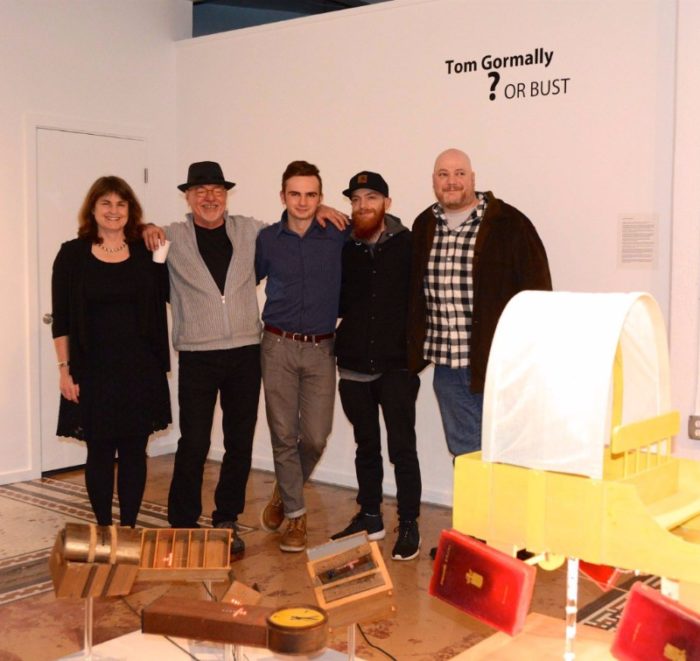
Makayla, Tom, Connor, Sean and Delvin
From Tom:
I’m the father of three boys; Conor is my youngest son. It was a surprise for me to become a father again so late in life; I love him…he is a gift. It’s been amazing to watch Conor develop as a human being and as a student; he is a wonderful young man and it makes my life richer to journey along with him. I’ve appreciated Conor’s help with writing art applications and creating work in the studio. We enjoy cooking together, watching films, and especially talking sports together and with Conor’s half-brothers Sean and Devlin.
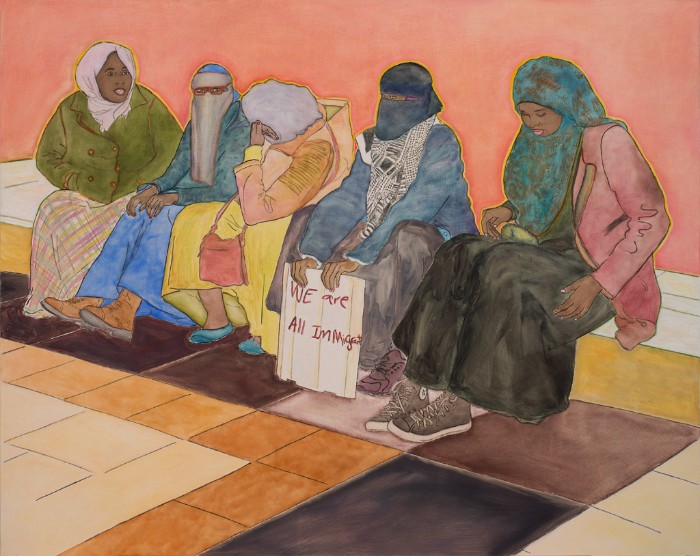
We Are All Immigrants, oil paint on Arches oil paper, 22″ x 30″
Malayka Gormally
Malayka Gormally’s paintings are in over one hundred collections nationwide, including the collections of Safeco Insurance, the City of Kent, and the City of Seattle Portable Works Collection. Her portrait clients have included individuals who have been board members at the Seattle Art Museum, the Henry Gallery, and the Palm Springs Art Museum. She currently has work in 10x10x10xTieton 8th International Small Works Exhibition, and she is preparing for an upcoming two-person exhibition at Spaceworks Gallery in Tacoma. She completed the Artist Trust EDGE Professional Development Program in 2015 and was awarded a 2017 Art Projects Grant by 4Culture to create portraits of immigrant and refugee women in King County. Her website is MalaykaGormally.com.
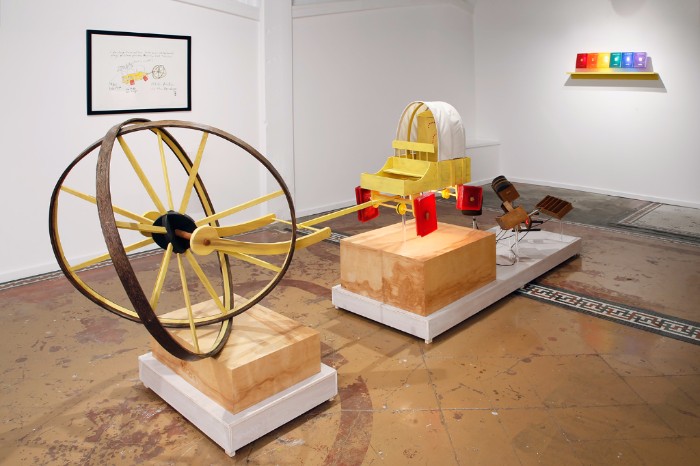
“Rough Road to the Apocalypse”, installation view;
wood, resin, paint, favric, lights, electronic motors, 48″ x 168″ x 36″
Tom Gormally
Tom Gormally is known for his whimsical and thought-provoking sculptures that incorporate wood craftsmanship with found objects, diverse materials, and LED lighting. He has exhibited nationally and internationally for 40 years, including the Katonah Museum (NY), Des Moines Art Museum (IA), Nelson-Atkins Museum of Art (KS), among others. He created site-specific sculptures in Seattle and Belfast, Northern Ireland, for the Horsehead International Outdoor Sculpture Exhibitions.Tom has also exhibited large-scale sculptures at the Bellwether International Sculpture Exhibitions, Bellevue, WA. Press coverage includes reviews in Sculpture Magazine and The New Art Examiner as well as BBC TV and radio interviews. Tom is a past-recipient of an NEA award for sculpture and was awarded a 2015 Artist Trust Fellowship. His work can be seen at TomGormallySculpture.com.
Learn more about other paintings in the Monthly Miniature, Children of Artists series

